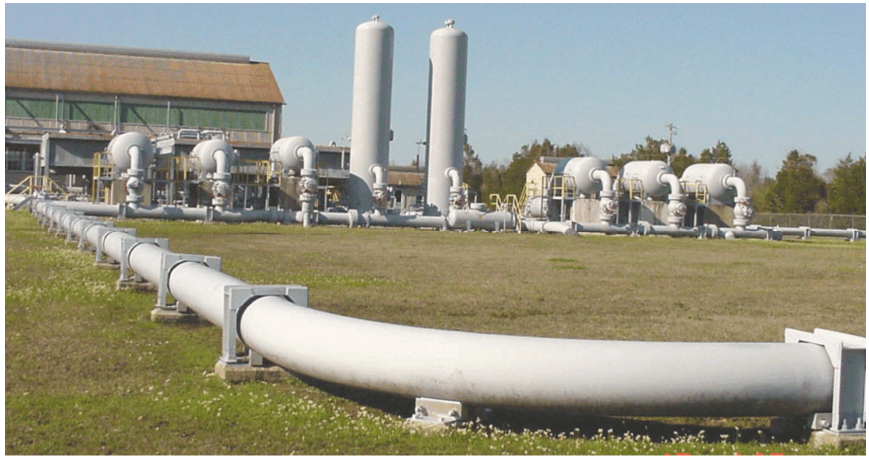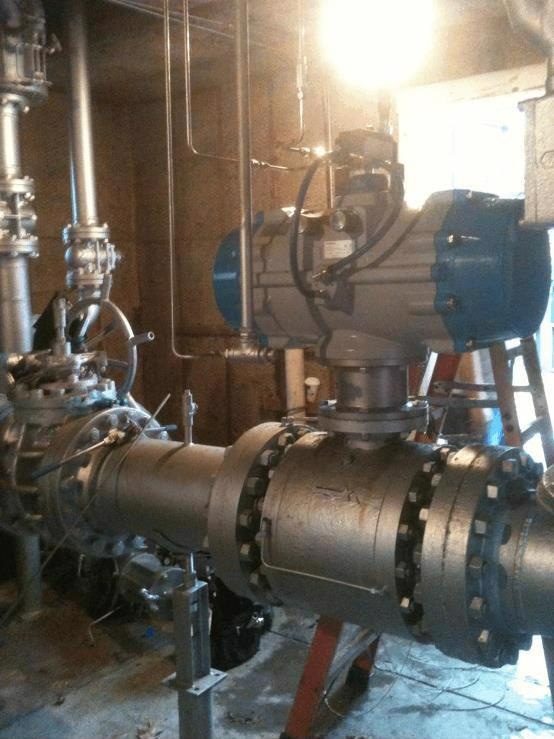Natural gas pipeline networks depend on booster pumping stations along the lines to retain the necessary line pressure for consistent natural gas flow between consumer and supply, as well as to eliminate any contaminants or liquids from the gas to provide pure, sweet natural gas. The local controls in the station monitor the flow of gas through the boosting and cleaning operation, thus positioning the control valves for appropriate flow regulation and pressure.
The final step in supplying natural gas to consumers is distribution. A majority of the consumers get their sweet natural gas from their local gas utility, commonly called Local Distribution Company (LDC). The LDC is accountable for accurately controlling and monitoring the supply of natural gas at all points to maintain effective and efficient operation.
The pressure energy for the valve positioners regulating the valve actuators is provided by a limited portion of the natural gas flowing through the station at most distribution and booster stations. The natural gas line pressure offers sufficient pressure, thereby eliminating the need for expensive air compressors, which are usually used to supply instrument air for these positioners.

Typical booster pumping station. Image Credit: ABB Measurement & Analytics
Using this sweet natural gas as the supply energy, the ABB Model EDP300 Digital Positioner is best suited for these applications. The supply pressure to the EDP300 ranges from 1.4 to 10 bar (20 to 145 psi).
The EDP300 has a low gas consumption during steady-state valve position, which is the lowest in the industry for a modulating style valve positioner at just 0.03 kg/hour (0.015 scfm), guaranteeing the lowest potential energy usage.
Starting January 1st, 2015, all natural gas-powered equipment, like positioners and controllers, located between the wellhead and the point where gas reaches the transmission pipeline had to comply with the EPA’s permitted maximum bleed limit of 0.1 scfm (standard cubic feet of gas per minute). This provision would be extended to other parts of the pipeline network as well.
The maximum steady-state bleed of the ABB EDP300 Digital Positioner is less than 0.03 kg/hour (0.015 scfm), which would help natural gas facilities follow the EPA guideline.

Distribution station control valve with ABB positioner. Image Credit: ABB Measurement & Analytics
The EDP300 has been designed for Double Acting or Single Acting actuators and has an embedded safety mechanism that moves the control valve to a safe location upon failure or disruption of the 4 to 20 mA control signal to either close or open (named as fail safe) or keep the valve in the last position (called as fail-in-place).
The applicable choice is determined by the process implementation and is part of the model selection process for the positioner. The EDP300’s Auto-Adjust and user-friendly installation ensures quick and simple setup and commissioning through local pushbuttons and an LCD display that also indicates valve position.
To mount the EDP300 to the Actuator, a wide range of control valve mounting kits are available.
More information about the installation and positioner can be found in the following product information:
Source: ABB Measurement & Analytics
| Document |
Description |
| DS/EDP300 |
EDP300 Data Sheet |
| OI/EDP300 |
Operating Instructions |
| CI/EDP300 |
Commissioning Instructions |
For form designation and hazardous area explosion safety selection, refer to the Data Sheet on the ABB site.
Note
In all situations where natural gas is used as supply energy instead of compressed air, the option code “P8” must be used in the model number. To meet the installation criteria for natural gas service, the following steps must be taken:
- The maximum ambient temperature should be well within 60 °C (140 °F).
- The provided ¼″-NPT pneumatic outputs must be vented to clean, non-hazardous environments.
- Only the design with the “Intrinsic Safety” form of protection and order code P8 has been licensed for natural gas service.
- The device must be used in compliance with the requirements in the applicable certificate when used with natural gas.
- During operation with Natural Gas in type of protection ‘Ex n’, the device may only be operated with approved cable glands.
EDP300 Recommended Models with FM/CSA Approval
Given below is a list of suggested EDP300 models for use in applications that use Natural Gas as a supply energy source. It should be noted that these models have FM/CSA I.S. (Intrinsically Safe) approval; for other approvals, users should see the EDP300 data sheet model selection on the ABB website.
Single Acting Fail Safe
EDP300F1H1S2DA1D1M5P8R3 is the model number (including valve position feedback ranging from 4 to 20 mA).
Single Acting Fail-in-Place
EDP300F1H1F2DA1D1M5P8R3 is the model number (including valve position feedback ranging from 4 to 20 mA)
Double Acting Fail Safe
EDP300F1H2S2DA1D1M5P8R3 is the model number (including valve position feedback ranging from 4 to 20 mA).
Double Acting Fail-in-Place
EDP300F1H2F2DA1D1M5P8R3 (including valve position feedback ranging from 4 to 20 mA).
Note
Users can consult the factory for additional choices such as:
- Emergency Shutdown Device (ESD) for process safety shutdown override or startup ready-to-go interlock work
- Distance limit switches for confirming valve travel